[Chinalco.com] With the renewed development of consumer electronic products such as mobile phones, tablet computers, and notebooks, a large number of new processes, materials, and structures have been applied. Aluminum alloys are light-weight, high-strength, corrosion-resistant, and molded. Such advantages as good performance are widely used to make various consumer electronic product structural parts, and further processing is performed using a laser pulse spot welding process. When using a laser for pulse spot welding, the solder joints are prone to cracks, resulting in decreased weld strength and greatly reduced stability. Although traditional aluminum alloys such as CO2, YAG and so on can avoid the cracks produced by the continuous laser welding, the traditional laser beam has poor beam quality, large volume, high maintenance cost, and low photoelectric conversion efficiency, which restricts it to some extent in consumer electronics products. Applications. In particular, structural components of consumer electronic products have the characteristics of thin thickness, small size, and high precision. When the conventional continuous laser welding is used, problems such as large deformation, solder penetration, and melting are easily caused.
The rapid development of fiber lasers has brought about an opportunity to solve this problem. Fiber lasers were born in the 1960s and were slow to develop due to the limitations of current technology. Since Snitzer et al. proposed double-clad fiber in 1988, fiber lasers and amplifiers based on this cladding pump technology have achieved rapid development, and the output power level of fiber lasers has rapidly increased, and are widely used in high-precision laser processing and lasers. Medical, optical communications, and defense.
Compared with traditional lasers, fiber lasers have good beam quality, small size, high precision, and high photoelectric conversion efficiency. When welding aluminum alloy structural parts of consumer electronic products, some defects and problems in the welding of conventional lasers can be well avoided. A comparative study of fiber lasers and pulsed lasers, which are widely used in aluminum alloy structural parts of consumer electronics, was conducted to determine whether fiber lasers can be successfully applied to such products.
Experimental materials and equipment
(1) Experimental materials
A representative 5052 aluminum alloy was selected as the material for the experiment and analyzed for its chemical composition. The results are shown in Table 1. The material thickness is 0.8mm and the welded joint is a lap joint.
(2) Experimental equipment
The pulse laser used in the experiment was a YAG lamp power feedback pulsed laser, and the laser power was 300 W. The appearance of the pulsed laser is shown in Figure 1. The fiber laser uses a single-mode fiber laser with a laser power of 500 W. The appearance is shown in Figure 2.
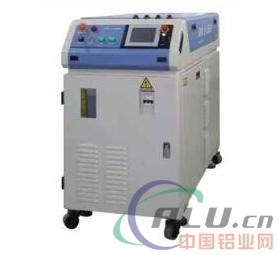
Figure 1: YAG Pulsed Laser Welding Machine
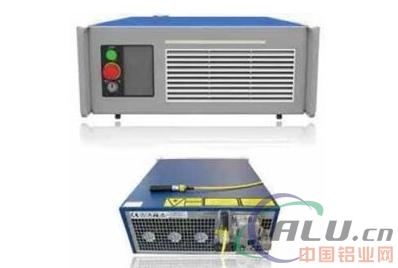
Figure 2: 500W fiber laser
Metallographic analysis was used during the experiment to evaluate the quality of the weld, the tensile strength was evaluated by the tensile test, and the welding distortion was evaluated by measuring the apparent size of the workpiece after welding. The welding parameters in the experiment are shown in Table 1 and Table 2.
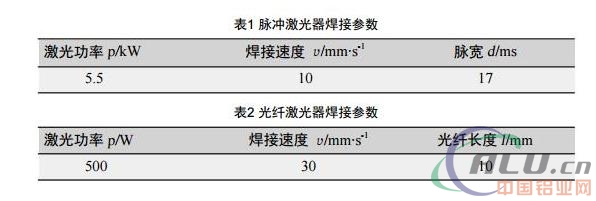
Welding defects
The main defects of laser welding of aluminum alloys are porosity and cracks, which are particularly evident in pulsed laser welding. It is generally believed that the pores produced by laser welding of aluminum alloys are mainly pores resulting from vaporization of hydrogen atoms and low-melting-point boiling alloy elements. Aluminum alloy has a high coefficient of linear expansion and a large welding stress. It is a eutectic alloy and is prone to hot cracking. Especially in the case of laser pulse spot welding, the single pulse has a short acting time, the thermal cycle speed is fast, and cracks tend to be large. In the case of continuous seam welding of aluminum alloys using fiber lasers, the time for the molten pool is greatly extended, welding stress and the influence of low melting point substances on welding cracks are improved, and the tendency of cracks during the welding process is greatly reduced. At the same time, the prolonged existence of the molten pool is also conducive to the discharge of gas in the molten pool, reducing the formation of welding pores.
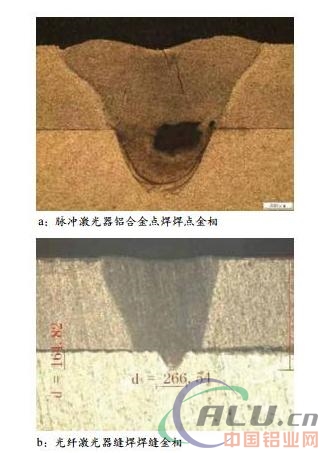
Figure 3: Comparison of Pulsed Laser Aluminum Spot Welding and Fiber Laser Weld Welding
Figure 3 shows the pulsed laser aluminum alloy spot welding spot and the fiber laser seam welding weld metal. As can be seen from Figure 3, the cracks and the porosity of the fiber laser under continuous seam welding conditions are significantly improved. Strength and stability
Welding cracks can significantly reduce the strength of welded joints and have a huge impact on product availability and reliability, and are one of the more hazardous welding defects. When the aluminum alloy pulse laser spot welding, the crack is an important factor affecting the welding strength, due to the unavoidable and irregularity of the crack, resulting in aluminum alloy spot welding strength is much lower than the strength of the material itself, and the various welding products The difference in intensity is also large and the stability is poor. The continuous welding of fiber lasers for welding aluminum alloys can avoid welding cracks and effectively increase the strength and stability of the welds.
Fiber lasers and pulse lasers are welded to the same aluminum alloy product for welding tension. The average pull of the fiber laser is 3.9 times that of the pulsed laser, and the standard deviation of pull data is only 1/3 of the pulsed laser. Combined with the metallographic analysis in Fig. 3, the width of the weld joint of the fiber laser is much smaller than that of pulse spot welding, but the pull force can reach nearly 4 times that of the pulsed laser because of: (1) Fiber laser weld length There is still an extension in direction, and the actual effective bonding area is not smaller than that of the pulsed spot. (2) The welding defects such as blowholes and cracks in the pulse spot welding cause the welding strength to be much lower than the strength of the base metal, and the strength of the fiber laser welding seam is close to Base material. Therefore, fiber lasers can effectively increase strength and stability compared to pulsed lasers when welding this type of product.
Welding efficiency
Since the tensile force of the fiber laser seam welding is much higher than that of the pulsed laser spot welding, this provides space for improving the welding efficiency. By reducing the number of weld seams and the length of the weld seam, it is possible to achieve a pulsed laser with a higher welding efficiency. Spot welding with even higher welding tension.
In the actual operation process, the fiber laser segmented continuous seam welding process can completely replace the original pulsed laser spot welding process by reasonably optimizing the welding parameters, the number of weld seams, the length, and the welding position. According to the statistical data in actual production, the process obtained more than three times the production efficiency of the original pulsed laser spot welding process, and at the same time, it increased the welding tension to more than 1.5 times that of the original pulsed laser spot welding process.
Welding deformation
Aluminum alloy has a large coefficient of linear expansion and is prone to welding distortion. The amount of deformation of the laser-welded aluminum alloy is relatively small, but even when the precision of the welding of the IT component type is relatively high, even a slight deformation will have a large influence, and it is necessary to perform preventive control. Generally, the heat input of seam welding using a conventional continuous laser is larger than that of pulsed laser spot welding, so the deformation will be larger than that of pulsed laser spot welding. The fiber laser has better beam quality, less spot, and more concentrated energy. It can weld with faster speed and smaller heat input, so the product deformation is smaller than traditional continuous lasers.
Due to the above characteristics of fiber lasers, the intensity of fiber laser welding of aluminum alloy IT components is much higher than that of pulsed lasers. By reasonably optimizing the fiber laser's welding parameters, number of welds, weld length, and distribution position, it is possible to meet the requirements of the workpiece. At the same time as the strength requirements, the total heat injected into the workpiece during the welding process is reduced, so as to further reduce the heat distortion of the workpiece. After measurement, the total welding deformation of the laser welding seam welding workpiece exceeds 3.5% of pulsed laser spot welding, and the relative pulsed laser spot welding process has no obvious difference, which can meet the actual demand.
Appearance
IT component products have higher requirements for appearance, while aluminum alloy materials are affected by elemental segregation, surface roughness, oxide layer, etc., resulting in inconsistent laser absorption rates on the surface of the workpiece. This phenomenon has a greater impact on laser pulse spot welding. The use of pulsed laser spot welding is prone to problems such as unwelded, spatter, smoke and dust, affecting the appearance and performance of the product, requiring secondary cleaning.
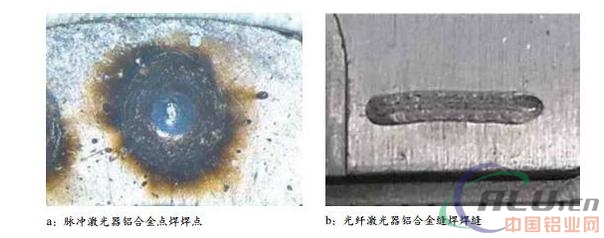
Figure 4: Comparison of the appearance of pulse laser spot welding and fiber laser seam welding
The appearance of pulsed laser spot welds and fiber laser seam welds is shown in Figure 4. When the fiber laser continuously seam welds the aluminum alloy, the welding process is more stable, and spatter and fumes are less likely to be generated. No secondary cleaning is required, and the appearance and process are superior to the pulsed laser.
in conclusion
(1) The use of fiber lasers for continuous seam welding of aluminum alloy IT component products can avoid defects such as welding cracks and blowholes that often occur during pulsed laser spot welding, greatly improving the welding strength and its stability.
(2) By optimizing the fiber laser's welding parameters, the number of welds, the weld length, and the distribution location, the welding distortion can be reduced and the production efficiency can be improved.
(3) When the fiber laser is used to weld aluminum alloy IT components, the weld seam is smooth and beautiful, and spatter, smoke, etc. are not easily generated. No secondary cleaning is required and the production process is reduced.
(4) The segmented seam welding process of fiber lasers is superior to the spot welding process of pulsed lasers in terms of welding strength, overall appearance and production efficiency, and the deformation amount is equivalent to a pulsed laser, and can completely replace ordinary pulsed lasers in aluminum alloys. The application of IT component products has high application value.
The Double Decker Roof Roll Forming Machine can produce two different profile drawings on one machine.
It Can saving more room and more money when compared with using two different machines.
Double Layer Steel Roofing Sheet Roll Forming Machine are widely used in building: the steel-structured large-scale warehouses different kinds of greenhouses etc.
Double Deck Roll Forming Machine
Double Deck Roll Forming Machine,Double Deck Roofing Sheet Roll Forming Machine, Double Decker Layer Roofing Sheet Forming Machine,Double Layer Decker Sheets Roll Forming Machine
HEBEI HANMAC MACHINE CO., LTD. , https://www.chinahanmac.com